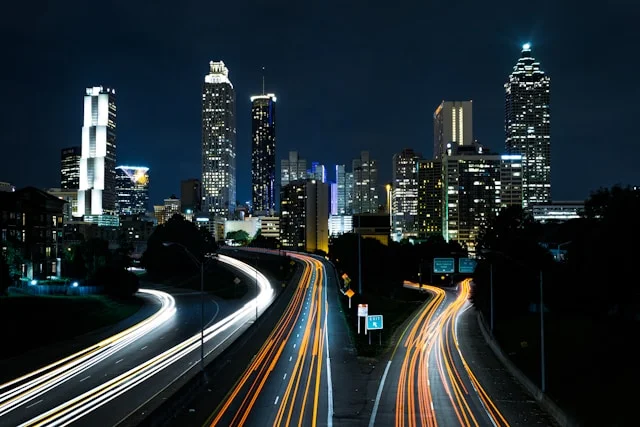Driving in major cities can be a daunting experience, with their bustling streets, complex traffic patterns, and constant construction. However, with the right approach and some key tips, navigating these urban environments can become a manageable and even enjoyable task. Here, we provide comprehensive advice for driving in major cities, focusing on preparation, safety, and efficiency.
Preparation: Know Before You Go
1. Research and Plan Your Route
Before setting out, it’s essential to research and plan your route. Use GPS and mapping apps to find the most efficient path and to be aware of any road closures or traffic delays. Consider alternative routes in case of unexpected changes. Familiarize yourself with the key roads, landmarks, and parking facilities in your destination area.
2. Understand Local Traffic Laws and Regulations
Each city has its own set of traffic laws and regulations. Ensure you are aware of speed limits, parking restrictions, and any specific rules that may apply, such as congestion charges or restricted access zones. Knowledge of these regulations can help avoid fines and ensure a smooth driving experience.
3. Vehicle Readiness
Ensure your vehicle is in top condition before embarking on a city drive. This includes checking fuel levels, tire pressure, and fluid levels. Carry a spare tire, a jack, and essential tools. Additionally, having a full tank of fuel can prevent the inconvenience of searching for a gas station in a busy urban area.
Navigating City Traffic
1. Patience and Alertness
Driving in a major city requires a high level of patience and alertness. Be prepared for stop-and-go traffic, frequent lane changes, and unexpected maneuvers by other drivers. Stay calm and focused, and avoid aggressive driving behaviors that can escalate stress and risk.
2. Use Public Transportation Lanes and Carpool Lanes Wisely
Many cities offer public transportation lanes and carpool lanes to ease traffic congestion. If you qualify to use these lanes, they can significantly reduce travel time. However, misuse of these lanes can result in hefty fines, so ensure you are aware of the specific rules governing their use.
3. Be Aware of Pedestrians and Cyclists
Urban areas are teeming with pedestrians and cyclists. Always be on the lookout for them, especially at intersections, crosswalks, and bike lanes. Yield to pedestrians and give cyclists ample space when passing.
Parking in the City
1. Find and Use Parking Apps
Parking can be one of the most challenging aspects of city driving. Utilize parking apps to find available spots, compare prices, and even reserve spaces in advance. These apps can save time and reduce the frustration of circling the block in search of parking.
2. Be Mindful of Parking Signs and Restrictions
Cities often have complex parking regulations. Pay close attention to signs indicating permit requirements, time limits, and street cleaning schedules. Ignoring these signs can lead to fines or towing, turning a convenient parking spot into an expensive hassle.
3. Consider Public Parking Garages
Public parking garages are a reliable option for city parking. They often provide secure and accessible spaces, albeit at a higher cost. Weigh the convenience and security of a garage against the potential savings of street parking.
Safety Tips
1. Keep Your Valuables Out of Sight
Urban areas can have higher instances of vehicle break-ins. Keep your valuables out of sight, either in the trunk or a glove compartment, to deter theft. Consider investing in a steering wheel lock or an alarm system for added security.
2. Avoid Distracted Driving

Distracted driving is particularly dangerous in a busy city environment. Avoid using your phone or other distractions while driving. If you need to make a call or send a message, pull over to a safe spot before doing so.
3. Know Emergency Contacts
Familiarize yourself with local emergency contacts, such as the city’s traffic hotline and the nearest emergency services. Having this information readily available can be crucial in case of an accident or other emergencies.
Efficient Driving Tips
1. Optimize Fuel Efficiency
City driving often involves frequent stops and starts, which can impact fuel efficiency. To optimize fuel usage, accelerate smoothly, maintain a steady speed where possible, and avoid idling for extended periods. Regular vehicle maintenance, such as oil changes and air filter replacements, can also enhance fuel efficiency.
2. Utilize Ride-Sharing and Carpooling
Consider ride-sharing and carpooling options to reduce the number of vehicles on the road and ease traffic congestion. Many cities offer incentives for carpooling, such as access to carpool lanes and reduced parking fees.
3. Plan Trips During Off-Peak Hours
Whenever possible, plan your trips during off-peak hours to avoid the heaviest traffic. Early mornings, late evenings, and weekends often have lighter traffic, making for a smoother and quicker journey.


